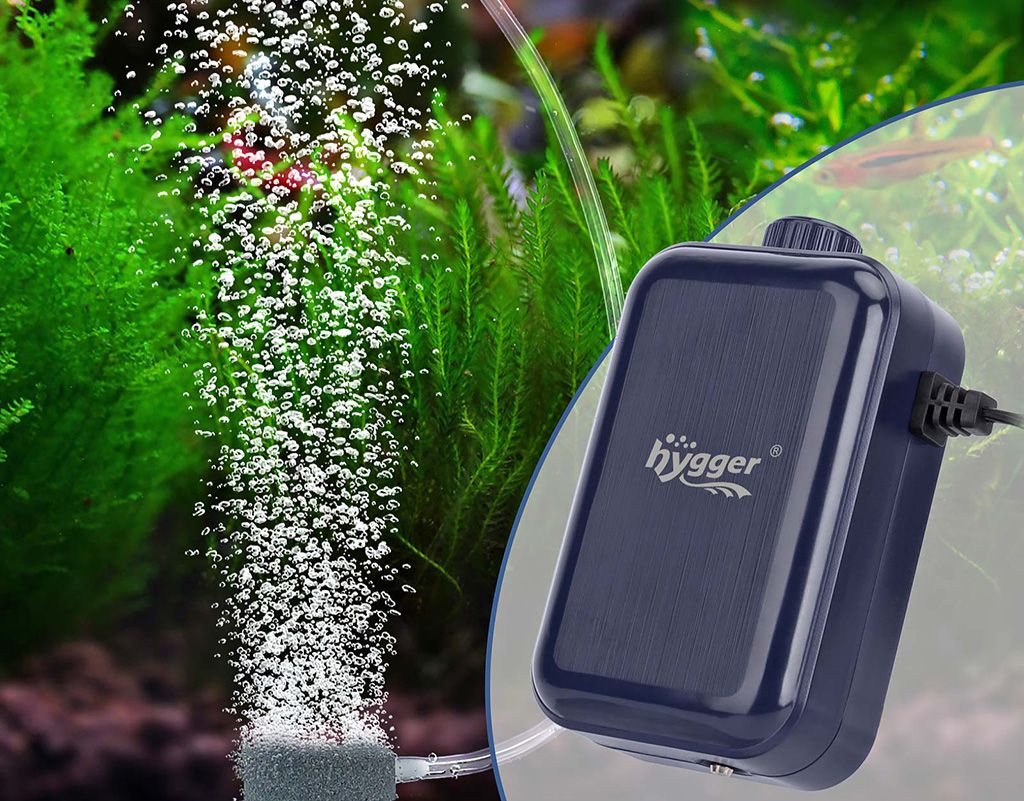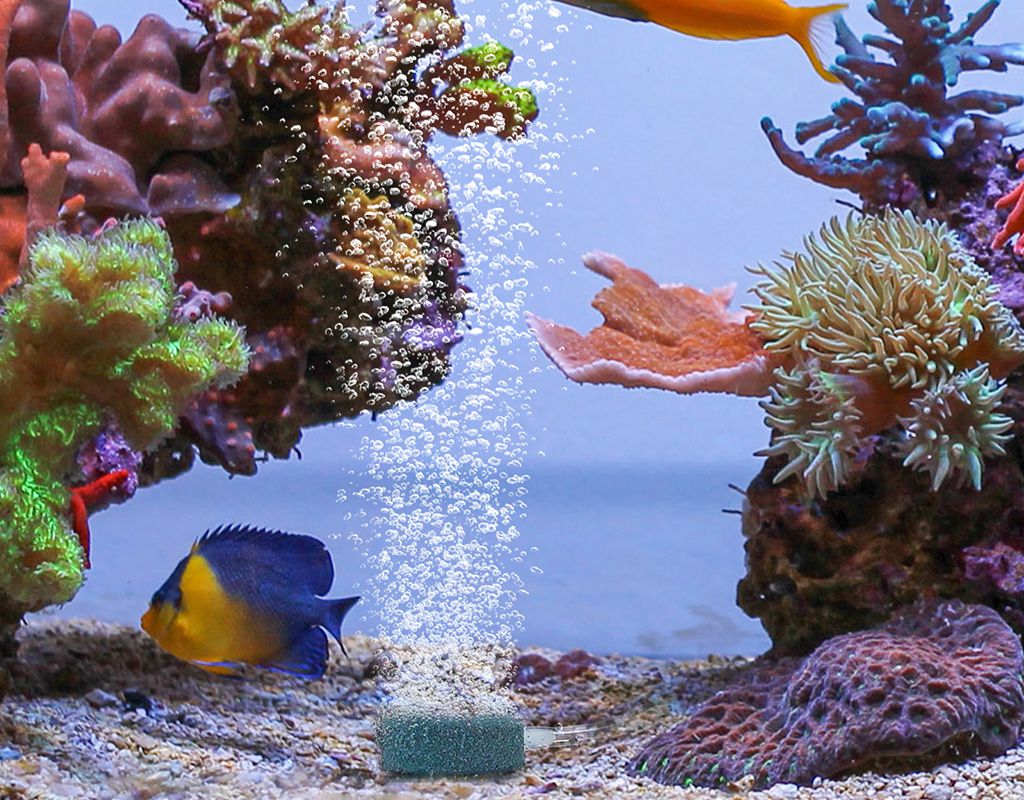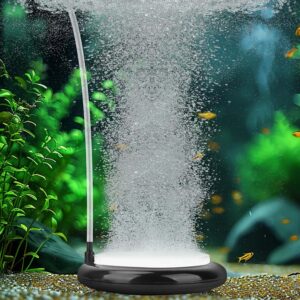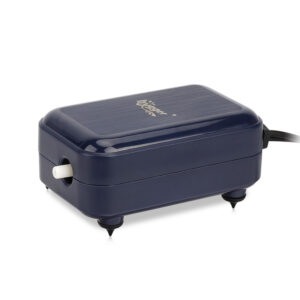If you keep oxygen-consuming fish, it would be necessary to add an air pump to your tank. Otherwise, it would pose a risk of oxygen deficiency. If you are a beginner and are in a dilemma of how to choose a suitable air pump, do not be scared. Today’s article will dig into a deeper discussion about how to choose and use an aquarium air pump.
Content Table
Pick a Better Air Pump
Now that air pumps are vital for aquariums, how to pick a better one? Just continue reading, you will get some ideas from this part.
Size & Power
When it comes to air pump selection, you should consider the aquarium size, pump size, and pump power. The larger your tank, the larger the power of the air pump. Generally, a slightly larger air pump is better, especially for deep aquariums. It is best to know where the pump is located, and the available space, first.
Connection point
You’d better know how many pieces of aquarium equipment need to be connected. For instance, if you only need to power an airstone, then an air pump with one connection point is great. On the contrary, as for other pieces of equipment, an air pump with multiple connection points should be the perfect alternative. For example, the best air pump for an aquarium with two air outlets is perfect for a large tank of up to 300 gallons, which provides powerful and dependable airflow. The air pump can be connected with two air stones or one air stone and one other piece of aquarium equipment, such as an aquarium filter.
Furthermore, the design of an internal aerator and external casing reduces the noise to less than 35 decibels. Accordingly, it won’t disturb your sleep while keeping it running.

Check the appearance
To make sure that there are no loose components and parts of your air pump, it is best to check whether the package and air pump are damaged or not.
Test your air pump
The noise EERRRRR… makes people annoyed and bad mood, right? Then a super quiet air pump would be critically crucial. And sometimes you set up a tank in the bedroom or office, where quietness is quite important. As a result, you should test the air pump. And then choose one according to how quiet it is. The one that would not produce lots of noise should be your first choice.
How to test your air pump? Just plug it in, then place the air pump on solid surfaces, like the top of a desk, or aquarium glass. After that, hear the sound of vibration to assess whether you can accept the noise. It is better if there is a tool to test the noise for you.
The Use and Experience of Air Pump
After learning how to pick the best air pump for an aquarium, are you interested in knowing more about how to pump air in a tank? In this segment below, we will share some experience of using the air pump, along with some recommended air stones. For instance, if you have a 50-gallon aquarium with substrate and some fish or shrimp, and the tank is less than 4.9ft in height, a 4.5 W fish tank oxygen pump is a great option. It is small but stronger in power. Also, the pump does not take up space in the aquarium, while supplying sufficient oxygen for your fish.
Moreover, you can manually adjust the oxygen output according to the quantity and features of the fish you keep. Additionally, adding a nano air stone would be perfect, which is invisible, durable, and steady. Compared to traditional ceramic air stones, nano air stones are more corrosion-resistant because of the special EVA material.
Noise of Air Pump or Reduction of Air Volume
How to deal with air pump malfunction? Here we will talk about two faulted situations – the noise of the air pump and the reduction of air volume.
The noise of the air pump
When it comes to the noise of the air pump, here are some ways to make it quieter. The placement of the air pump will affect how much noise it makes. If your air pump is vibrating and making too much noise, you can try and place it on a soft surface, which will reduce the sound of the vibrations. Also, it is feasible to place some soft material under your air pump, like a towel or foam.
Moreover, it is an excellent alternative to hang the air pump up above the water level with the power cable in the case of a light air pump. Furthermore, you can add an air stone, which creates smaller bubbles. Also, it is essential to change the air stone. Because it may be clogged, which is also one reason for a noisier air pump. By the way, if there are other pieces of aquarium equipment attached to your air pump, it is necessary to check whether they are clogged or not, and then clean them. In addition, if none of the methods mentioned above works, you can replace a quieter air pump, like a mini air pump.

Reduction of air volume
On the other side, in the case of air volume reduction, what can you do? Adjust the check valve. Specifically, take the fish tank air pump as an example. If you do not place it above the water level, you should install a check valve. Maybe you can turn it to the right to increase the air volume.
If it does not work, it is best to find the causes. The reduction of air volume may be the result of a clogged air stone or pump motor. Just clean the air stone or the air pump. Additionally, air pump malfunction also probably causes a reduction of air volume. In this case, you should repair or change the damaged component.
The Bottom Line
To conclude, just consider the aquarium size, pump size, pump power, and connection points if you want to pick a better air pump for your fish tank. Or ask help from experienced aquarists. That’s it. Wish you the best for your aquaristic effort. Finally, thanks for your reading.


Leave a comment